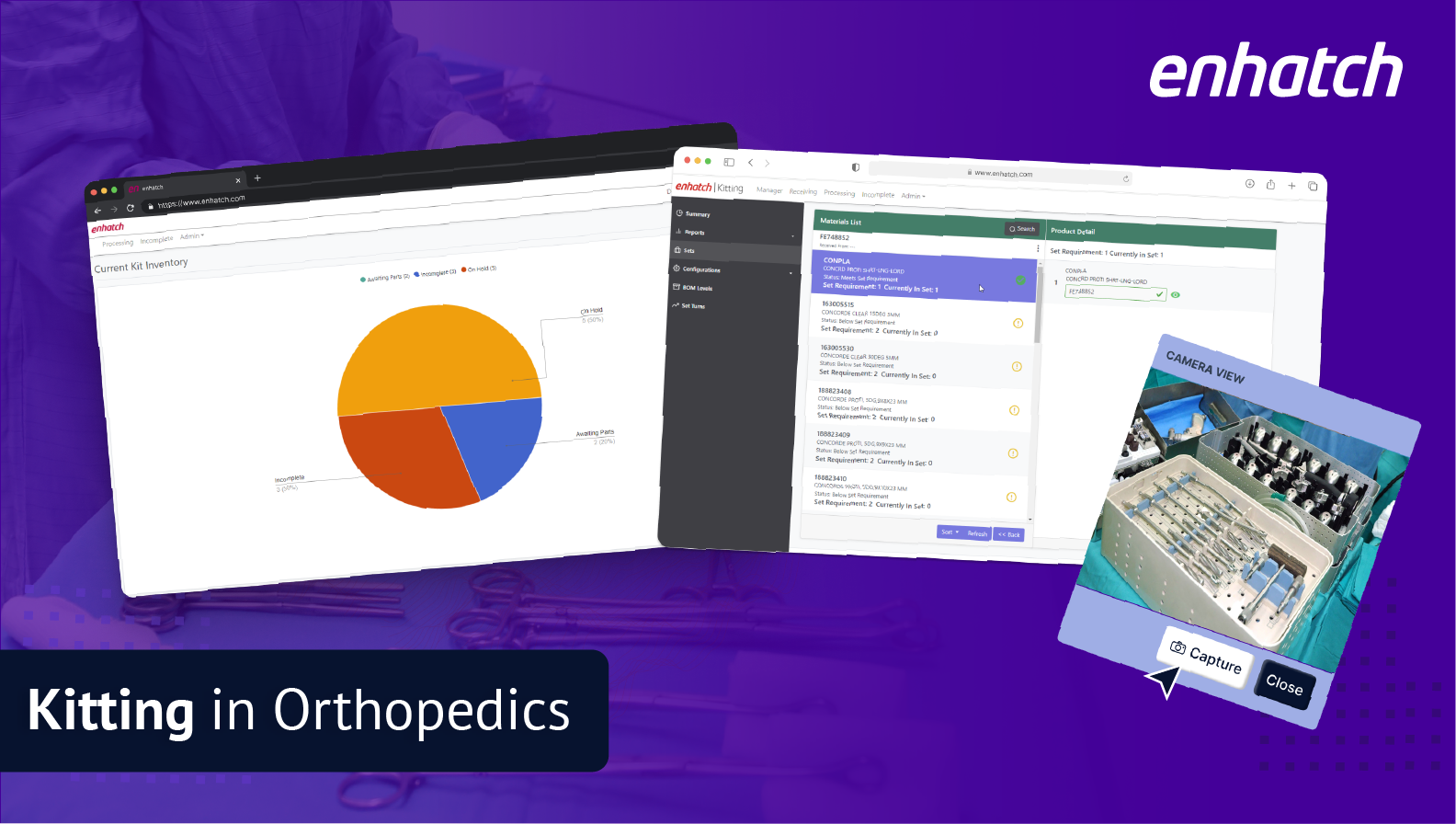Growing AI-Powered medical device inventory management

-
Orthopedic surgery needs a more efficient medical device supply network
-
AI for inventory management could be a strategic solution
-
Patient specific implants can reduce the number of parts moving, and artificial intelligence can help automate the design process
Artificial intelligence in Medical Devices can optimize inventory movement, Creating an efficient clinical workflow
The orthopedic supply chain is not at maximum productivity; rather, it is inconsistent, expensive, and complex. The problems scale as the number of orthopedic procedures rises every year – device manufacturers and hospitals need to manage supplies more efficiently. As manufacturers spend more on production to meet this demand, less money will be invested towards research and development. Artificial intelligence-powered inventory tools can provide an order of magnitude solution for cost-effective and simple inventory management.
AI for inventory management can orchestrate the flow of the right inventory to the right parties by seamlessly accessing, prioritizing, and allocating inventory information across the network.
The complex life cycle of a medical device involves a network of manufacturers, sales representatives, distributors, and shipping suppliers prior to implantation. The key to an efficient inventory management process is streamlining information about people, products, and places. However, there are many barriers to managing this cycle – inaccurate tracking, poor communication, difficult item disputes, and slow auditing.
Automating small tasks can increase the accessibility of inventory by reducing the time and inaccuracy of ordering and fulfillment.
Today, inadequate reporting can lead to lost inventory and stock shortages, causing sales representatives to scramble before cases. Supply chain managers need complete visibility of products to track kits for transfers.
AI in medical devices can automate small tasks to bring more accuracy to inventory movement. An algorithm can transcribe a bill of materials from a handwritten charge sheet into a clean text identified order and artificial intelligence can recommend products based on surgeon’s order history. Sales representatives in the field can take a picture of a tray to log locations of products simply and quickly, documenting the most up-to-date locations of sets.
With artificial intelligence-powered software, an algorithm can locate real-time location of all consignment and loaner sets and prioritize transfers within seconds. Device manufacturers can save millions annually by reducing unnecessary manufacturing, shipping, and storage costs.
Learn more about Enhatch's inventory management solutions.
Device manufacturers can have a competitive advantage with a streamlined system that can both optimize inventory and manage sales.
The key to effectively managing inventory logistics is minimizing idle inventory while ensuring that there is enough stock to run. Supply chain managers rely on time series forecasting models that use a chronological series of inventory data to predict future inventory needs. AI for inventory management can more accurately forecast inventory sales and track finances.
For device manufacturers who always feel like they need stock inventory on shelves, reducing the number of unused parts can be difficult. Artificial intelligence can compute possibilities and make decisions in milliseconds, reporting which products are running low and reordering. This process is accomplished through medical device inventory tracking software
Artificial intelligence-powered inventory logistics for medical devices are already growing from the data-driven buds of manufacturing, sales, and shipping optimization. However, device manufacturers also need to connect business intelligence with industry specific metadata – like set inspections, turnover time, and backorders. Most Enterprise Resource Planning software is not designed for this.
The orthopedic supply chain needs an advanced, robust logistics system – a system that can handle charge sheets, facilitate commissions, structure royalties, and compile standard reports in one place. Enhatch offers the Intelligent Surgery™ Platform with these capabilities for inventory logistics.
Artificial intelligence-powered preoperative planning can allocate inventory and reduce the number of parts needed for each case.
A single surgery can require upwards of a dozen trays, full of multiple sizes of the device and all instruments associated with those products. A rush delivery for a single case can create a bottleneck effect on a hospital’s sterile processing department. Because of the backlog of inventory at the autoclave, some hospitals require surgical sets to arrive two days in advance. This is why hospitals are also looking towards prepackaged sterile implants that can reduce the cost-per-case.
Device manufacturers are looking to offer preoperative planning tools that can reduce the number of parts brought in for each case. Surgical planning software can provide more confidence in selecting implant sizes and positioning. Artificial intelligence can render a 3D model made from patient CT scans or X-rays, and use it to find the optimized implant size and position. From there, a kitting application can automate a custom Bill of Materials, send it out for fulfillment, and integrate with inventory and sales for the device manufacturer.
Learn more about Enhatch's pre-op planning care.
Artificial intelligence can also shrink idle inventory by expediting mass inventory optimization.
Patient specific implants and instruments minimize the number of parts needed for a surgery down to one kit. They can also reduce the time wasted kitting extra parts, tracking and cleaning dozens of instrument trays that will not be used. Patient specific implants reduce the need for consigned inventory, which takes up valuable space in hospitals with infrequently used products. The devices needed for surgery can be manufactured and shipped in a sterile single-use tray, right when they’re needed.
Artificial intelligence can automate the design process for patient specific implants.
3D printing is not yet as profitable as standard implants. From CT scans or X-rays, artificial intelligence can automatically render a detailed 3D bone model and design the implants to match the patient’s anatomy. Instead of biomedical engineers manually segmenting the bone or surgeons planning the operation by hand, an artificial intelligence algorithm can calculate the optimal size and position of the implant. The computer can also complete order processing, 3D printing, kitting, and shipping. By reducing the number of people involved in surgical planning and the product pipeline, the process becomes a highly efficient workflow.
Enhatch is developing artificial intelligence-based technology solutions for problems along the entire surgical care continuum. Enhatch is working with forward-thinking medical device companies to offer surgical planning tools as part of the Intelligent Surgery™ Platform.



